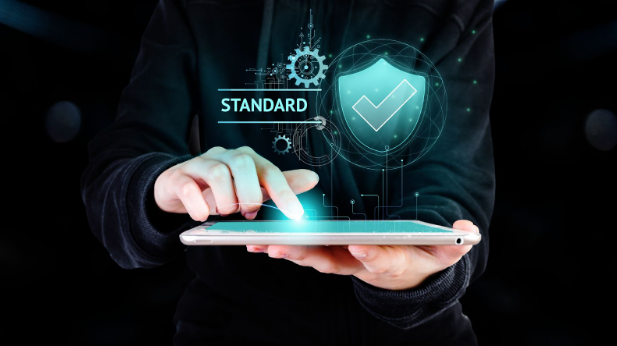Let’s be honest—building a brand today? It’s not just about logos or pretty colors. It’s about trust. And here’s the thing: trust breaks faster than it builds.
You spend years getting it right—serving customers, telling your story. Then one morning, you wake up to messages: “Is this really your website?” Nope. Someone faked it. They stole your name, your vibe, your audience’s attention—and used it to scam people.
That’s brand impersonation. And it’s getting worse. Which is why brand protection isn’t a nice-to-have anymore. It’s survival.
What Brand Impersonation Really Looks Like
So, what’s this impersonation stuff really about?
Well, imagine someone sets up a site that mirrors yours. Same logo. Near-identical layout. They might copy your tone too—pretending to be your support team or HR rep. Next thing you know, they’re messaging your audience like they’re you.
They’re not doing this for fun.
Here’s what they usually want:
- People’s credit cards or personal info
- To sell cheap knock-offs using your name
- To trash your reputation with fake promises
- To fool job seekers with fake offers
Clever? Sadly, yes. But it’s also dangerous—and far more common than most think.
It’s Not Just Big Brands Getting Hit
This isn’t some Fortune 500 problem.
- In 2024, fraudsters impersonated the U.S. Department of Education to target loan applicants.
- Menlo Security found that more than half of browser phishing attacks came from brand impersonation.
- Between 2021–2024, Microsoft was spoofed in 93% of brand-related phishing attacks, per Cofense.
Even with world-class tech and legal teams, these giants still struggle. So if you’re running a leaner ship? You’ve gotta stay even sharper.
The Cost Isn’t Always Obvious—But It’s Heavy
Sure, scams mean stolen money. But the damage goes deeper.
- In the U.S. alone, impersonation scams led to $3 billion in losses in 2024.
- One bad interaction through a fake account? That customer may never return.
- Your support team might spend weeks doing damage control.
- And if data leaks? You’ve now got regulators at your door.
IBM pegged the average phishing breach cost at $4.9 million in 2024. Yeah, per incident.
That doesn’t even factor in the emotional toll—staff burnout, sleepless nights, and the overwhelming frustration of trying to fix something you didn’t break.
What Can You Actually Do About It?
No silver bullet here, but if you layer your defenses—tech, legal, and human—you’ll be in a much stronger spot.
1. Watch What’s Happening Around You
- Set up alerts for domain names that look like yours.
- Check social media often for fake profiles.
- Run dark web scans to see if your name’s being used in shady places.
2. Strengthen Your Digital Doors
- Use SPF, DKIM, and DMARC for all business emails.
- Train your team—make phishing drills part of your calendar.
- Keep software updated. Seriously. Don’t snooze those updates.
3. Know How to Fight Back Legally
- Get your trademarks registered.
- Act fast on takedowns. Delay gives scammers more reach.
- Work with hosting platforms—they often help if you’re prepared.
4. Use Tools That Actually Help
There are platforms now that do real-time monitoring, alert you instantly, and even file takedowns automatically. Super useful if you don’t have a big team.
Want to see how the pros do it? Check these Brand Protection Examples.
Let’s Talk About Brand Protection Reports
So what’s a brand protection report anyway?
It’s basically your radar. It scans the digital space for threats and gives you a breakdown of what’s going wrong—or what might go wrong soon.
A good one will tell you:
- What threats are active right now (fake sites, shady profiles, phishing attempts)
- Which ones are urgent
- If there’s a pattern—like the same scammer hitting you multiple times
- What actions were taken (and which ones worked)
- Metrics like takedown speed, repeat incidents, and threat type
This report is how you stay ahead of bad actors. It replaces guesswork with data. And it keeps you from panicking when something shady pops up.
Want a deeper look? This Brand Impersonation Protection guide covers it well.
If You’re Thinking “I’ll Deal With It Later”… Don’t.
That’s the mistake. Most brands act only after the damage is done. By then? It’s too late.
Why you need to act now:
1. Scammers are using AI to clone brands faster and better.
2. Trust is fragile—once lost, it takes years to rebuild.
3. A single impersonation post can go viral for all the wrong reasons.
4. Regulatory pressure is real—and fines hurt.
5. No plan = no defense. Period.
Waiting is expensive. Quietly expensive. And avoidable.
How to Build a Proactive Brand Protection Frame
Here’s a simple roadmap:
|
Keep Learning: Useful Resources
- For concrete examples of impersonation and scams, check out Brand Protection Examples.
- To explore practical steps for stopping impersonators, visit Brand Impersonation Protection.
Last Words:
Your brand? It’s personal. It’s your effort, your late nights, your story. And seeing someone misuse it? That stings.
You don’t need to live in fear. You just need a plan. And a tool like the brand protection report to guide your next move.
Don’t wait until someone else uses your name to do damage. Be the one in control.
Stay sharp. Stay original. And don’t let anyone impersonate the work you’ve poured your heart into.
Stay safe. Stay authentic. Protect your brand—always.

